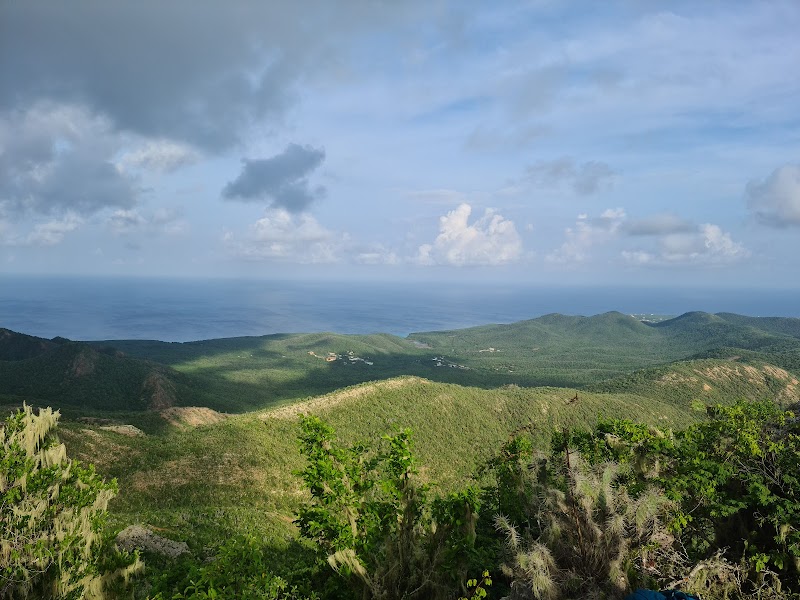Best Shore and Scuba Diving Spots in Curaçao: Exploring Colorful Reefs and Underwater Caves
Curaçao’s diverse shore and scuba diving spots offer a direct window into vibrant coral reefs and mysterious underwater caves. From calm bays perfect for beginners to thrilling wrecks and caverns for experienced divers, this Caribbean island invites exploration with straightforward access and rich marine life.
Time Your Dive With Calm Mornings
Early mornings provide the calmest waters and best visibility, reducing currents' challenge and maximizing reef sightings.
Use Reef-Safe Sunscreen
Protect the vibrant coral ecosystems by choosing sunscreens that are free from oxybenzone and octinoxate chemicals.
Check Tide Tables Before Diving
Planning dives around tides helps avoid strong currents especially around cave entrances and rocky outcrops.
Secure Your Gear Properly
Ensure fins, masks, and snorkels fit snugly to avoid losing equipment in stronger currents and while swimming through caves.
Best Shore and Scuba Diving Spots in Curaçao: Exploring Colorful Reefs and Underwater Caves
Curaçao’s coastline is an underwater playground where vibrant coral reefs and shadowy caves invite both novice snorkelers and seasoned scuba divers into their depths. Here, the turquoise sea hums with life, from darting parrotfish to graceful sea turtles navigating through coral branches that seem almost sculpted rather than grown. Shore diving spots make access simple, with reefs starting just steps from the sand, while scuba enthusiasts can push deeper into caverns carved by centuries of ocean currents.
Start your adventure at the Playa Lagun, where a crescent-shaped bay opens to a reef bustling with colorful fish and swaying soft corals. The entry is calm and shallow, perfect for those who want to ease into underwater exploration. Currents here inch forward steadily, testing your buoyancy but never demanding too much effort. Nearby, the diver-favorite Tugboat site offers an artificial reef where an old shipwreck rests at 12 meters, already claimed by coral and a host of creatures. Shore access means minimal boat logistics, saving time and making dives more flexible.
For a more technical experience, head to the Blue Room Cave, an underwater cavern illuminated by sunlight filtering through the water’s surface. This spot requires moderate skill due to low overhead clearance and occasional surge, but the shimmer of turquoise lights dancing on cave walls rewards patient divers. The caves here dare you to respect their ancient architecture—silent, deep, and fiercely themselves.
Christian Bay is ideal for shore dives which combine ease with visual rewards. With reef edges dropping sharply beneath clear waters, it’s a place where fish shoals gather like crowds at a festival. The rocky outcrops and underwater caves offer scope for adventurous navigation, with dive routes ranging from beginner-friendly to intermediate. Currents hover gently, but divers should keep a close eye on the tide table to plan their dives safely.
Preparation will maximize your experience. Start early in the day when the water is calmest and visibility tops out. Secure fins with sturdy straps and wear reef-safe sunscreen to protect both skin and marine ecosystems. Hydration is key—salt and sun sap energy quicker than you expect. Remember that cues from experienced dive operators or local guides can elevate safety and open up hidden spots locals prize.
Curaçao’s reefs are alive with activity, and shore diving simplifies entry without sacrificing the thrill of discovery. Whether drifting among lush coral gardens or slipping into underwater caves, this island offers accessible yet extraordinary immersion into the Caribbean’s underwater wild. Get ready to explore where water, light, and life come together in a ever-changing dance beneath the surface.
Nearby Trips
All Adventures
Boat Charters
Water Activities
Adventures near Willemstad
Discover the unique and memorable adventures that make Willemstad special.
Frequently Asked Questions
What is the best way to access Curaçao’s shore diving sites?
Many shore diving spots are reachable by car with on-site parking. Locations like Playa Lagun and Tugboat have easy beach entries requiring minimal walking with gear, making them accessible for all skill levels.
Are there any underwater caves accessible for beginner divers?
The Blue Room Cave is best suited for divers with some cave or cavern experience due to restricted overhead environment and surges. Beginners should start with open reef dives before attempting these sites.
What marine wildlife can I expect to see?
Curacao’s reefs teem with parrotfish, angelfish, sea turtles, and moray eels. Keep an eye on the reef tops where queen conch and trumpet fish hide, especially in quieter, rocky areas.
Is it safe to dive alone at these shore sites?
Solo diving is generally discouraged due to safety risks. Shore diving with a buddy or under local guide supervision ensures better handling of currents and unexpected cave conditions.
How can I minimize environmental impact while diving here?
Avoid touching corals, maintain neutral buoyancy to prevent kicking up sediment, and always secure your gear. Using reef-safe sunscreen also helps protect these sensitive marine environments.
Are there less popular or hidden spots worth exploring?
Yes, areas like Daaibooi Beach offer quieter reefs with healthy coral and fewer visitors, ideal for discovery and photography away from busier sites.
Recommended Gear
Mask and Snorkel
Clear vision underwater and easy breathing at the surface make these indispensable for shore dives and reef exploration.
Neoprene Booties
Protect feet on rocky entries and slippery spots while providing grip and warmth.
Underwater Flashlight
Highly useful for cave dives to reveal hidden crevices and marine life in shadowy recesses.
Dive Computer
Tracks depth, bottom time, and ascent rates to keep your scuba dives safe and controlled.
Local Insights
Hidden Gems
- "Daaibooi Beach reef for secluded dives"
- "Muur van St. Anna, a wall dive with unique coral species"
Wildlife
- "Hawksbill turtles frequent the shallow reefs"
- "Rare seahorse species hiding in soft corals"
History
"Many wreck dives reflect the island’s maritime trade past, with remnants of cargo ships resting as artificial reefs."

